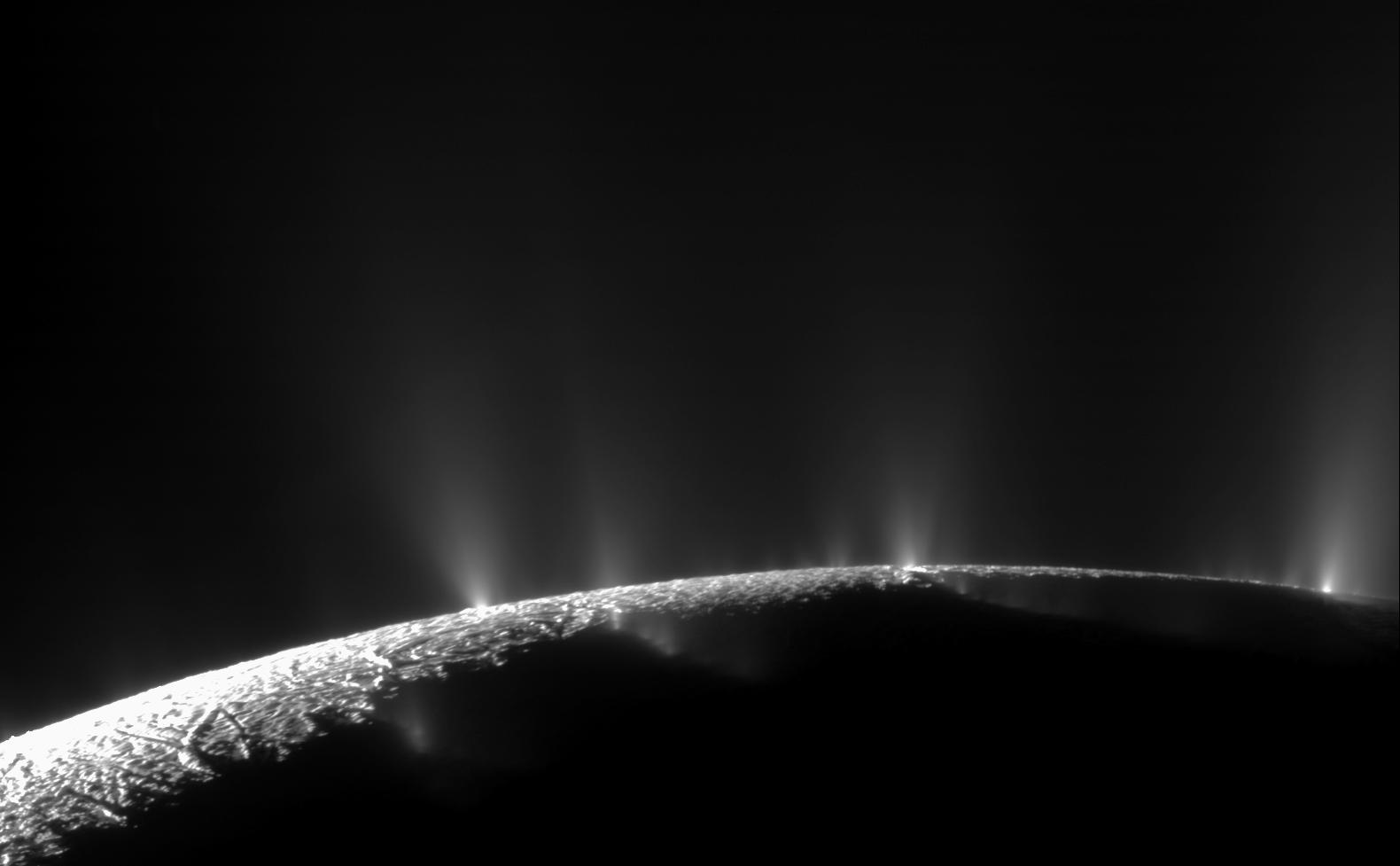5 min read
Cassini is orbiting Saturn with a 31.9-day period in a plane inclined 48 degrees from the planet's equatorial plane. The most recent spacecraft tracking and telemetry data were obtained on July 23 using the 70-meter diameter Deep Space Network (DSN) station at Goldstone, California. The spacecraft continues to be in an excellent state of health with all of its subsystems operating normally except for the instrument issues described at http://saturn.jpl.nasa.gov/news/significantevents/anomalies. Information on the present position of the Cassini spacecraft may be found on "Eyes on the Solar System".
Sequence Implementation Teams worked on developing the ten-week command sequences S85, S86, and S87, while S84 controlled the spacecraft's activities in flight. Cassini continued to fall inward toward Saturn this week, and flew through periapsis of its Saturn orbit going 28,968 kilometers per hour relative to the planet on Friday, having more than tripled its speed from apoapsis earlier in the month. On the way outbound again, an encounter with Saturn's largest moon Titan, the T-103 flyby, was the week's highlight. A write-up for the encounter appears here: http://saturn.jpl.nasa.gov/mission/flybys/titan20140720/
Wednesday, July 16 (DOY 197)
The Imaging Science Subsystem (ISS) viewed the rings to reacquire and track orbits of individual known features such as the "propellers" seen here: http://go.usa.gov/YyGR; the Composite Infrared Spectrometer (CIRS) rode along for the 100-minute observation. Next, the Visible and Infrared Mapping Spectrometer (VIMS) scanned the rings for six hours with ISS, CIRS, and the Ultraviolet Imaging Spectrograph (UVIS) riding along. Then as the bright star Alpha Lyrae (also known as Vega) passed behind the rings, VIMS watched the occultation for four and one quarter hours, with ISS, CIRS, and UVIS again riding along.
Today, NASA's Astronomy Picture of the Day featured an unusual view of Saturn, itself partially occulted from Earth's view: http://apod.nasa.gov/apod/ap140716.html
Thursday, July 17 (DOY 198)
VIMS kept its focus on the rings while another star, reddish R Lyrae, passed behind them in occultation for 102 minutes. Science observations then took a planned pause while the flight team uplinked commands in real time, during a routine DSN tracking period, to perform an Orbit Trim Maneuver (OTM). OTM-385 had the spacecraft turn and fire its small rocket thrusters for 29 seconds, resulting in the desired velocity change of 32 millimeters per second; this fine-tuned Cassini's Titan approach trajectory. After the OTM completed, ISS started a fifteen-hour observation of the B ring, which will be compiled into a movie. The other Optical Remote-Sensing (ORS) instruments rode along taking data.
Cassini's Project Scientist gave the Von Karman public lecture at JPL this evening, "Revealing Saturn: Cassini's Tenth Year." The full talk is available for viewing at http://www.ustream.tv/recorded/50214136.
Friday, July 18 (DOY 199)
Cassini passed through periapsis early today; closest approach to Saturn was 900,000 kilometers. ISS led CIRS and VIMS in observing the Enke Gap in the outer A ring for nearly eight hours, to compile a movie. CIRS then made multiple radial scans of the unlit side of the rings while they were sunlit from behind at high phase angles.
Saturday, July 19 (DOY 200)
During a communications session with the DSN today, the flight team sent commands which Cassini would store for the instruments to use after the S85 background sequence begins its 10-week execution at the end of this month. The instrument-expanded blocks, 7,081 individual commands in all, were confirmed as properly received after the round-trip light time of two hours 40 minutes.
Inbound to Titan, the spacecraft turned to point its ORS instruments to the hazy moon, and all began their scrutiny of the enigmatic world. By day's end, the distance to Titan had shrunk to 208,000 kilometers, around half the distance from Earth to our Moon.
Sunday, July 20 (DOY 201)
Today's Titan T-103 encounter devoted its closest-approach segment to the ORS instruments, and not "just" for imaging. Of note, UVIS made use of an exceptional opportunity to observe first the Sun passing behind Titan's atmosphere for over an hour, then later, observing the blue-white-hot star, Alpha Eridani, also known as Achernar, as it slowly did the same over two hours. CIRS and VIMS took data riding along during UVIS's solar occultation, and they and ISS rode along for the stellar occultation. The high-quality spectral data from these occultations will complement observations that CIRS and ISS also made during the encounter. All during the ORS observations, the Magnetospheric and Plasma Science (MAPS) instruments also acquired important data. Outbound, VIMS watched for a specular reflection -- a glint of sunlight in the infrared -- from Titan's lake Kraken Mare.
The altitude of the encounter's closest approach, at 5,103 kilometers above the surface, happened to be nearly the same as Titan's diameter (5150 kilometers). As usual, this flyby took advantage of Titan's gravity and orbital momentum to change Cassini's orbit. After T-103, the spacecraft's orbit plane had increased its inclination by 1.5 degrees to 48 degrees from the planet's equatorial plane. Beginning with the next flyby though, T-104 on August 21, encounters with Titan will start stepping Cassini's inclination back down until it again aligns closely with the equatorial (ring) plane in March of next year. This will enable close flybys with Enceladus and Dione later in 2015.
A remarkable crescent of Saturn was the featured image today: /resources/16059
Monday, July 21 (DOY 202)
Following the encounter, ISS and the other ORS instruments continued to observe Titan's high northern latitudes through the end of Tuesday to monitor for clouds as summer approaches there.
Tuesday, July 22 (DOY 203)
The DSN used its antennas in Australia and California seven times this week to provide two-way digital communications and radiometric tracking for Cassini. A total of roughly 10.8 gigabits of telemetry data were captured from the spacecraft at rates as high as 124,426 bits per second. 7,122 individual commands were uplinked, and about 42 hours of coherent Doppler and ranging data were obtained for navigation.







